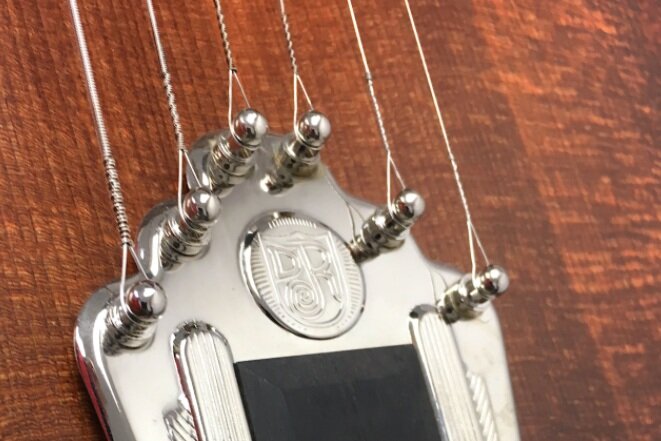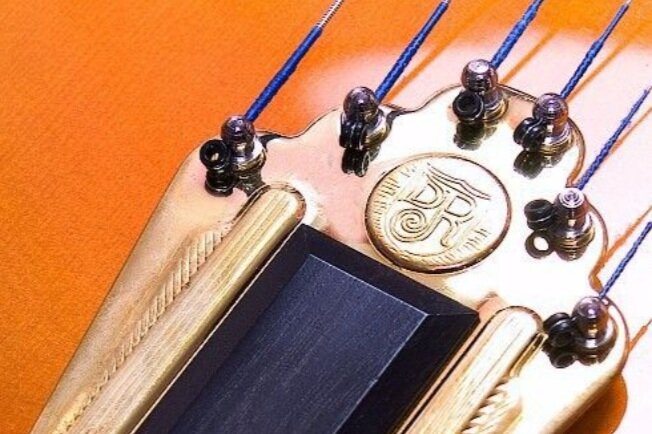Strings
The choice of string is entirely a matter of personal preference. And while there are many varieties, the classic choice of Gypsy Jazz players everywhere (including Django Reinhardt himself) are Argentines by Savarez.
They come in two tensions:
Standard-Tension (0.010” high-E string) - “purple wrap”
High-Tension (0.011” high-E string) - “red wraps”
Standard-Tension strings are ideal for an older instrument. They play a little easier on the fingers because of the lighter gauge and lower tension. Additionally, they put less stress on the top of the guitars. Not until the late 1970’s were the 0.011’s even available, so the bracing of early Favino’s, Busato’s, and Selmer’s were designed for 0.010’s. Typically they can handle high-tension, but there’s a greater risk of damage. Also sometimes (contrary to popular believe), I’ve found lower-tension strings to actually sound louder on certain guitars.
High-Tension gives you a little more power and snap in the playing. Sometimes you can get better articulation of the note without twanging-out.
Closer Look: Argentine 1510’s
Standard-Tension, Loop-end. They’re clear and brilliant strings. Moreover, they’re simply the gold standard. Buy them.
When they’re first on an instrument, they’ll sometimes be slightly louder and more metallic sounding, but with play wear they warm up. I typically change my strings once every 3-4 months. Really exceptional sounding instruments will still sound good even with “dead” old strings. That’s one way to tell.
Pro-Tip: Some people will string using standard-tension, and then use high-tension red’s on just the B and high-E strings, so they get the sound and articulation at the high-range with playability and intended top-tension of the 0.010 set.
Second Decision:
Loop-end: wraps around nub on the tailpiece
Ball-end: threads through holes in the tailpiece and is caught by the nubs
Loop-end
Ball-End



